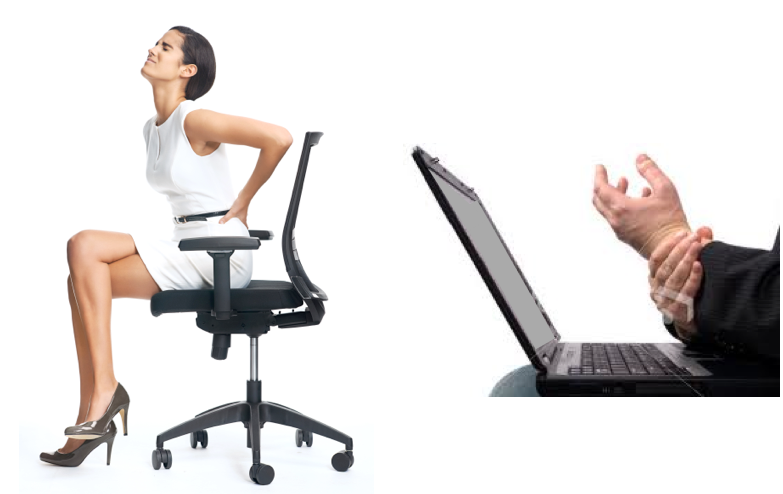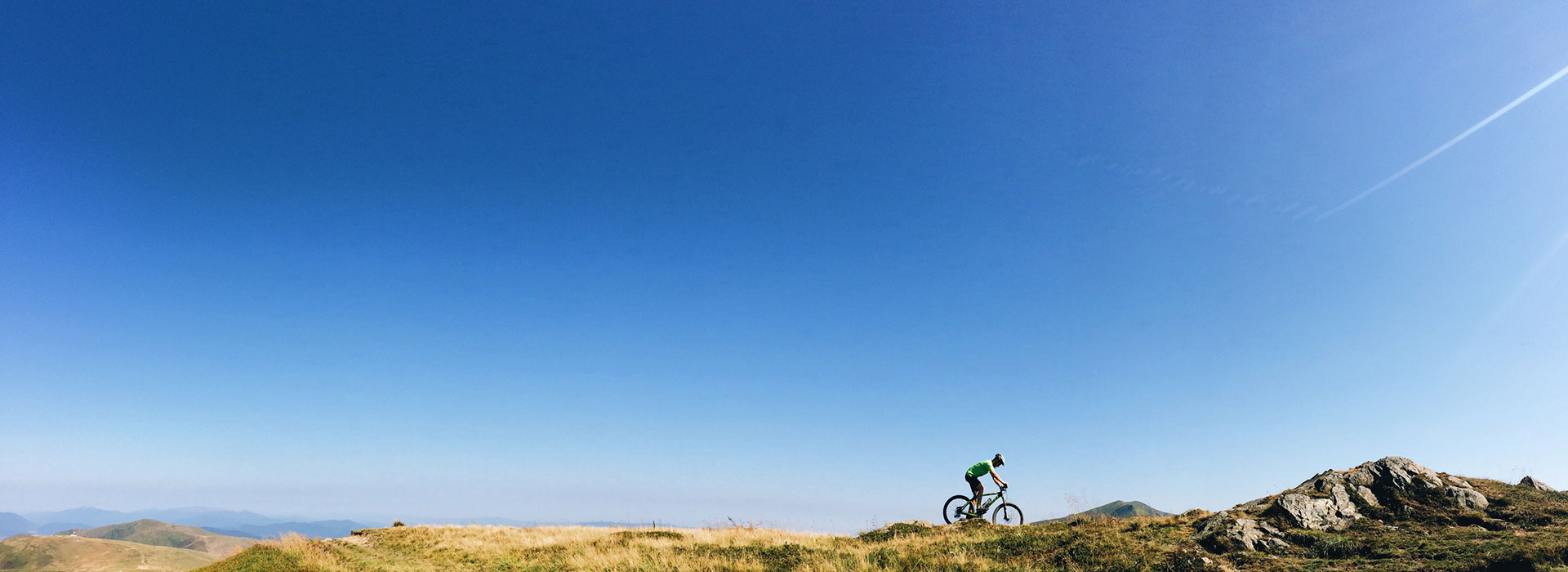
25 Apr 10 most common workplace injuries in Australia
Whether you’re a lumberjack or a bank clerk, accidents happen. But with a little awareness of how common these job-related injuries actually are and by taking more care, everyday Aussies can reduce the odds significantly and return home safe…
The reality is, no matter your occupation, it’s impossible to protect yourself completely from workplace accidents—a fact that costs the Australian economy $60 billion a year. But while some gigs are undoubtedly more dangerous than others, the list of Australia’s ten most common on-the-job injuries* suggests that we all need to take a bit more care.
1. Sprains and strains
The big daddy of workplace injuries, comprising nearly 43 per cent of all incidents, ‘sprains and strains’ is a catch-all handle that covers a variety of misfortunes, says Brendan Torazzi of OH&S provider AlertForce. ‘Workers who are required to bend and move their bodies to lift, carry or push heavy items are at serious risk of straining their muscles.’
Ten per cent of maladies are knee-related—and some more bizarre than others, such as the South Australian woman who last year won a compensation case against Return To Work SA over a knee injury she received while doing pilates during rehabilitation… for a separate injury.
‘The incidence of sprain and strain injuries generally increases with age,’ adds Torazzi, ‘peaking in the 40-44 age group.’
2. Fractures
‘Bone fractures and crushing are the second most common workplace injury in Australia,’ notes Torazzi, ‘making up 8.5 per cent of incidents.’
As noted in Safe Work Australia’s Key Work Health and Safety Statistics Report of 2015, the most regularly injured workers in the country work in Agriculture, Forestry & Fishing—with 21 out of every 1,000 workers having filed a serious post-accident claim. Perhaps unsurprisingly, foresters, farmers, meat processing workers and commercial fishermen are particularly imperilled.
But at least if you’re on the high seas, you’re not on the roads, which statistically speaking is the most dangerous place to be. ‘No matter what industry you work in, the majority of all workplace fatalities seem to be from vehicle incidents or car crashes,’ says life insurance analyst Michelle Hutchison. ‘It’s a really sad thing, and it affects so many people because so many of us drive as part of our jobs every day.’
3. Open wounds
Open-wound injuries account for 7.7 per cent of Australian workplace accidents. And we don’t seem to be getting any better at ensuring sharp tools only penetrate masonry, wood and gyprock rather than flesh, as the accident rate hasn’t changed much since a mid-’90s survey looked at the tools most commonly found to land Australian men in hospital.
While most of the study’s subjects were undertaking DIY projects at the time, of the top 10 tools most likely to maim, seven were inflictors of ‘open wounds’—power saws, lawn mowers, grinders, chainsaws, handsaws, nails and hatchet/axe/tomahawks. Grinders are almost twice as likely to land you in the emergency department than anything else, as were falls from a ladder (regarded as the ‘second most dangerous tool’). Needless to say, if you’re wielding a grinder while on a ladder without take due precautions, you might consider booking the ambulance in advance.
4. Contusions
Contusions are bruises. Most are minor of course, but those that do require treatment are often very serious. Being trapped between stationary and moving objects is one of the leading causes of injury and death across a range of dangerous jobs, from mining to the retail trade. Yes, retail. Of the 1.22 million retail workers employed in Australia in 2014, there was an incidence of 11,200 serious injuries and half a dozen deaths, proving it to be an unexpectedly dangerous career.
5. Tissue disorders
Performing the same movement repeatedly, especially under load, is no ticket to success—unless your idea of ‘success’ is long hours spent with a physiotherapist.
‘Try not to repeat the same action for extended periods of time as this can have a strain on your tissue in the long run,’ advises Brendan Torazzi. ‘Mix up your day with other tasks, and take regular breaks to give your body a rest.’
Lifting objects is the most common form of physical trauma in the wholesale trade, an industry of over 416,000 Aussie workers, which recorded 5,310 injuries in 2014—and, sadly, five deaths.
6. Spinal injuries
Bung backs, broadly, come in two workplace categories: those that may be traced back to poor posture, such as 30 years slouching in an office chair, and those more dramatic immediate catastrophes. For example, the most common cause of death in the construction industry is falling from a height, which accounts for 40 per cent of fatalities in that industry.
7. Deafness
Any sound louder than 85 decibels is capable of producing hearing loss, either over time or in an instant, depending on how booming it is and for how long you’re exposed to it. That’s about as loud as a diesel truck rumbling past at 65 kilometres an hour about 15 metres away from you; slightly quieter than a blender and slightly louder than an average garbage disposal (which clocks in at 80dB). While Brian Johnson was famously forced to quit AC/DC due to rock-induced hearing loss last year, the worst occupations for workplace hearing loss are airport ground patrol staff, followed by Formula 1 drivers (it’s 135dB behind the wheel) and mining. In Australia, 3.6 per cent of workplace ailments involve hearing loss.
8. Hernia
Hernia is the medical term for when an organ, such as the bowel, exits through the wall of the cavity that normally restrains it. Hernias can be tricky to treat, often necessitating prolonged treatment—much to the chagrin of the 2.2 per cent of injured workers whose organs make a break for it each year.
‘While most hernia cases are due to genetics or pre-existing medical conditions, activities such as heavy lifting can exacerbate the situation,’ says Torazzi. ‘Take regular breaks from manual handling and lifting tasks, and if you notice pain or lumps in the abdominal area, stop immediately and seek medical advice.’
Either way, you’re in good company – celebrity hernia sufferers have reportedly included Robin Williams, Madonna, Charlie Sheen and Dwayne ‘The Rock’ Johnson. ‘I had three wonderful hernia tears,’ reported an oddly cheerful Johnson, in 2013. ‘It’s a lot of fun pain to go through.’ Most Australian sufferers don’t report the ‘fun’ part.
9. Dislocation
Fans of major football codes will be aware that if a player has dislocated a joint the chances of it happening again are uncannily high—and might not even require a particularly significant blow.
Hard-as-nails US hockey player Victor Stesiak, for example, played through one shoulder dislocation, and then another, and another, eventually to discover that his injured shoulder would eventually ‘pop out’ when he coughed. In the end, it required extensive rehab.
And yet, the original injury is usually the result of a bad fall—often onto a slippery floor. Consequently, dislocations account for 1.5 per cent of Australian workplace incidents.
10. Burns
While relatively uncommon in most workplaces—accounting for only 1.4 per cent of occupational calamities each year—burns are disproportionately painful, can involve long recovery, and are over-represented in obvious jobs (for example, a third of on-the-job burns happen in restaurants).
The consequences can be severe, in monetary as well as medical terms—with admission to Australian specialist burns units costing around $2,000 a day, according to the charity run by world-renowned skin specialist Professor Fiona Wood.
Conclusion?
Papercuts are one thing, but with a little extra care taken there’s no reason why anyone needs to end up as a statistic. And often, even relatively non-serious injuries can necessitate long periods off work – with potentially devastating financial consequences for many employees and business owners.
*Sources including Safe Work Australia and the Australian Bureau of Statistics


No Comments